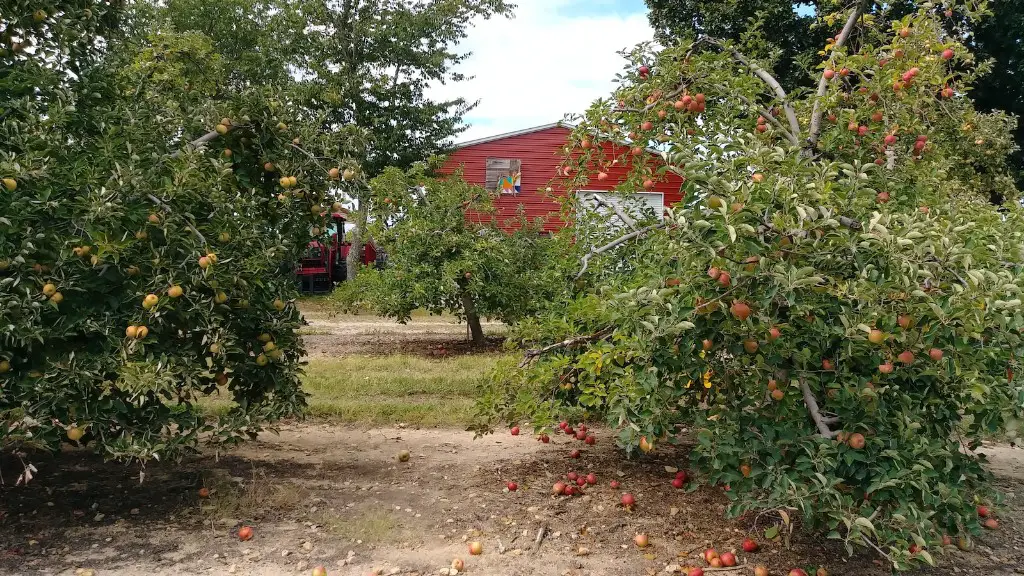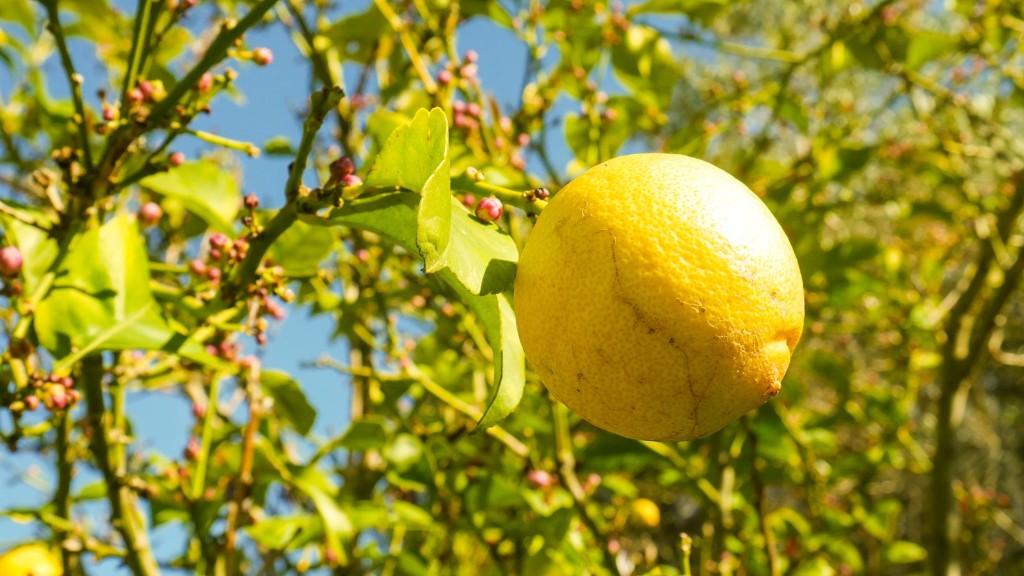Planting a Cherry Tree
Cherry trees can produce a harvest of sweet and juicy fruit when properly looked after, making them a popular choice among gardeners. Planting and growing a cherry tree requires careful attention, employing a few simple techniques.
Firstly, it is important to choose the best location for the tree. Cherry trees prefer full sun and well-drained soil. If planted in an area that does not receive six to eight hours of direct sunlight, the tree may not produce fruit. Additionally, any excess of water may cause the roots to rot.
The soil should also be checked for pH levels and possible drainage problems. The ideal pH level for a cherry tree is 6.5, though the tree could tolerate levels as low as 6.0. If the soil is too alkaline, adding sulfur can make the soil more acid. Furthermore, the amount of water the soil contains can be brought to an appropriate point by planting tree atop a mound or adding a bed of coarse builder’s sand.
The right variety of tree is also essential. Some cherry trees are self-fertile and can be planted as single trees, though two different varieties of trees may increase the yield if planted in close proximity. Semi-dwarf and dwarf varieties are popular backyard trees, often taking up less space than a full-sized tree.
In terms of planting the tree, there are a few things to consider. The tree should be planted in the late winter or spring months, when the ground isn’t frozen. The planting hole should be two to three times larger than the root ball and filled with soil from beneath the tree, avoiding the addition of other soils, compost, or fertilizer. After the tree is placed in the hole and covered, burlap covering the root ball should be removed and any air pockets filled in with soil.
Care and Maintenance
Cherry trees require specific care throughout all four seasons. Depending on the variety, fertilization, water, and pruning may all be necessary.
In the spring, a 10-10-10 fertilizer should be applied to the base of the tree, avoiding contact with the trunk and any foliage. Additionally, feeder roots should be spread out and covered with mulch or organic matter.
Summer is the time for watering, whether through rainfall or irrigation. Depending on the location, watering may need to be done every week, though some regions may require less frequent watering. Rainfall may also be an effective way to water the tree, as it ensures that the soil is moist.
Fall maintenance is most important for controlling pests such as fungus, mildew and rot. Keeping the area around the tree clear of leaves and fallen fruit can reduce the risk of pests and disease.
Pruning is also done in fall or late winter, cutting away branches that are diseased or damaged, as well as any unhealthy growth. Pruning also controls the shape and size of the tree, and can help with the production of fruit.
Harvesting the Fruit
When the fruit is ripe and ready for plucking, the cherry tree may need a little help from its gardener. Using ladders, the gardener can reach fruit that might be located higher up on the tree. Taking care to not damage the tree or branches, pull the fruit gently from the stem.
The fruit should be harvested at its peak, as ripe fruit won’t ripen once picked. This can be checked by lightly pressing to the fruit – it should give ever so slightly, but still remain firm.
Storing and Processing
Once the cherry has been collected, there are a few options for storage. Refrigerating the cherries, either in the container they were picked in or a different container, is one way to extend their shelf-life, though this decreases the fruit’s quality and flavor.
Cherries can also be processed or preserved: freezing or bottling with or without a sugar or syrup solution are some of the common methods. To freeze cherries, the fruit should be placed in a tray and into the freezer, once frozen, the fruit can be collected and stored in an airtight container. Bottling requires additional steps, such as washing and sterilizing jars, making sure all caps and lids fit firmly, cooling the jars afterwards and properly labeling each jar.
Disease Prevention
During all phases of care, attention should be paid to disease prevention. Regularly inspect the tree for signs of disease, such as yellowing of the leaves, wrinkling fruits, and black or white spots. Additionally, the tree should not be over or under watered, or exposed to overly warm temperatures. The mulch around the tree should be kept dry and the tree should be pruned with special attention to preventing overcrowding.
If any disease is identified, treatment should be given as soon as possible. This can be done through either chemical or organic means, depending on the area and circumstances.
Companion Planting
Cherry trees can be planted alongside some other plants to increase fruit yields. Some trees, such as crab apples and apricots, are said to be natural pollinators, while others, like apple trees and pears, hold a more complementary role, providing nutrients and protection from pests.
Useful Tips
When caring for a cherry tree, there are several tips and tricks that may help a gardener out.
Sometimes pruning the lower branches of the tree to a height of about six feet can help increase sun and air circulation, as well as helping reduce disease.
Using netting around the tree can ensure that wild birds don’t steal the cherries – a problem that can also be prevented by making sure the tree is not over-laden with fruit.
Cherry trees can be susceptible to frost, so if the weather is cold, investing in frost cloth may be a good idea.
Placing a board or light-colored flyscreen under the tree can make it easier to spot fallen fruit: a sign of the cherries being ripe and ready to pick.
Pest Control
Cherry trees are vulnerable to pests that can ruin the harvest season and have an overall negative effect on the health of the tree. Identification of these pests is key in controlling and preventing them.
Aphids, for example, feed on sap and produce wax, which can cause leaves to turn brown and yellow. Other common pests include Western Cherry Fruit Fly, peach twig borer, and tent caterpillar, which may lead to disfiguring and spotty leaves.
Insecticides should not be used on the tree until after the cherries have been harvested, as this may cause discoloration and affect the flavor of the fruit. Organic methods of pest control can be used, such as introducing beneficial insects like lacewings, removing any debris from around the tree and using companion planting for natural pest control.
Pruning
Throughout the year, cherry trees should be pruned to keep their shape and size, and to increase their yields. Pruning can be done in the late winter and late spring, removing any damaged, diseased or dead branches, as well as any that are growing too close to each other. Branches that receive too much sunlight should be pruned back, as should branches that are growing towards the trunk.
Trees can also be pruned to increase the exposure of fruit to the sun, aiding with ripening. Water sprouts should also be removed during pruning season, as this can also lead to better fruit yields.
Aftercare
Aftercare for a cherry tree includes generally keeping the area free of debris, weeds, and pests, ensuring the tree’s overall health. Utilizing natural and organic means of fertilization, pest control and maintenance will benefit the tree further, producing a great yield of sweet and juicy cherries.


